By Kathryn McLaughlin
Hampton Union, March 4, 11, 18, 25, 2016
[The following article is courtesy of the Hampton Union and Seacoast Online.]
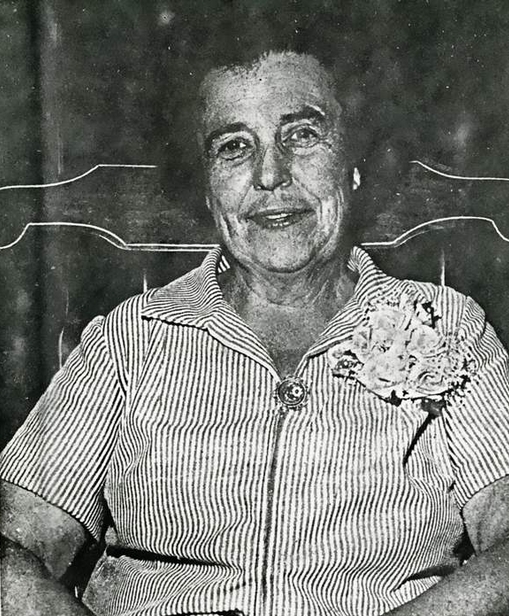
HAMPTON — In honor of Women’s History Month, the Hampton Historical Society (HHS) will be highlighting the life of Ruth Stimson, a long-time Hampton resident.
A woman of many interests, talents, skills and abilities, Ruth was highly accomplished both professionally and civically. She was a well-known personality throughout Rockingham County.
Ruth had a “can do” attitude. With this never-wavering mind-set, her achievements and successes were numerous during a time when women did not have so many accomplishments.
In March, HHS will tell you about her life. The story will in large part be told by Ruth, who was also a chronicler, using her 6-volume autobiography, “Our Lives Are Albums.”
The story will unfold throughout March with a daily posting on the HHS Facebook page, and each week in the Hampton Union. The Tuck Museum is also hosting an exhibit about Ruth.
HHS hopes you’ll enjoy learning about Ruth, from Ruth’s perspective, in the story titled “One of a Kind.”
Ruth calls Hampton home
It was the outbreak of the Korean War that resulted in Ruth’s move to Hampton, or so she suspected. Her parents and maternal grandmother were living in Amherst at the time. The Stimson’s had a 1,500-tree apple orchard there that was losing money.
“Mother decided that she needed and wanted to try a new course. Very quietly she asked me to look at for sale ads for houses. They (mother and grandmother) never discussed the matter with me, but mother’s decision that we ought to try living together might indicate her belief that in union there is strength in war or peace time.”
Ruth, 31 years old, worked out of the Rockingham County Cooperative Extensive Office in Exeter. She rented a furnished room from Mrs. Upham at 83 Main Street. She was frequently at her parents’ house on weekends.
In June 1950, Ruth found and her mother purchased a Cape Cod style house with an attached garage at 19 Watsons Lane in Hampton. Ralph Tufts, a plumber, had built the house but then decided to sell it.
There was work to be done inside the house. Ruth bought a rollaway bed and “camped out” so that she could take care of having floors finished and walls painted and papered while continuing her work as a Home Demonstration Agent. She brought what she had at Mrs. Upham’s – “an oak table, a boudoir chair, a two-burner electric plate and some dishes.”
“I even planted a 1 foot tall Spruce tree on the west boundary to commemorate my arrival in Hampton.”
When Ruth, her mother, grandmother and Patsy the dog moved into the house, her father stayed in Amherst for the harvest. “Farming had been his goal from 1917 on. Thus it was a disappointment when the effort didn’t succeed.”
After snow at Christmastime, the Hampton house and property (with a giant Elm, Pines, Birches and Choke Cherry trees) looked “like a Currier and Ives scene.” There was an advantage in Hampton compared to Amherst. “The street was plowed on the same day even after any Northeast storm. Mother felt much relieved with Gubba (Ruth’s name for her Grandmother) in her 88th year now.”
Ruth and her mother shared the chores required to run their home. “I did the shoveling when needed and made household repairs. Both mother and I worked on the grounds.”
A living encyclopedia on all phases of homemaking
As a Home Demonstration Agent for the Extension Service, Ruth had her perfect job. In an article published in 1953 in “New Hampshire Profiles,” Dorothy Dean Holman, the writer who was also Ruth’s neighbor, tells why.
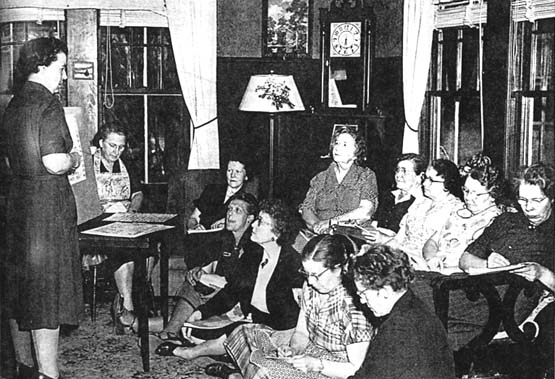
Ruth Stimson teaching a home demonstration class
“A little curly-haired miss and a freckle-faced boy were working busily in the backyard building a fire engine. The little girl’s blows with the hammer fell as true as her playmate’s; in fact, she hit the nail on the head more often than he! For here was work she loved to do – not playing with dolls, making mud pies, or playing house – but building things.
“That little girl has now grown into young womanhood, and still holding to that desire to create, she has made it her life’s work to show others the way… (She) is a veritable encyclopedia of how to do many phases of homemaking.”
Ruth speaks for herself in the article, echoing this defining quality.
“I like the challenge of learning new things, and have to be taught myself before I can teach others. Learn to do by doing is our (the Extension Service’s) motto, and we do just that.”
Ruth describes Extension work as “education beyond the realm of high school and college.”
Ruth demonstrated and taught women about a myriad of topics including upholstering, slip covering and refinishing furniture; clothing construction and tailoring; fabrics and their uses; food production, preservation and storage; weekly meal planning; kitchen arrangement; hospitality in the home; household pests and their control, financial planning and health issues.
Ruth was also a popular lecturer at women’s clubs on these and other subjects.
Ruth included Dorothy’s article in her autobiography.
A wonderful place
For Dorothy Holman, a quote from the poet Robert Lewis Stevenson defined Ruth’s outlook:
“The world is so full of a number of things, I’m sure we should all be happy as kings.”
In addition to Ruth’s love of her job with the Extension Service (there were administrative duties – records, reports and correspondence, as well as the continuing education aspects) and the great care she gave to her home, Ruth published a weekly newspaper column in the Hampton Union. She covered recent demonstration meetings and upcoming events, and provided news that she considered valuable to homemakers.
In her autobiography, Ruth notes a tour Extension Service employees took of the Towle Silversmith manufacturing plant. They received a booklet about the history of silverware and learned why silver was expensive. This was information Ruth could share in her column for consumer education.
Ruth was an oil painter and watercolorist. She is credited with more than 125 paintings and sketches. She also enjoyed photography. And she was an enthusiastic philatelist, amassing a large collection of domestic stamps.
Ruth was a member and at times an officer in local, state and federal organizations, including the Hampton Garden Club. Ruth and her mother joined the Hampton Garden Club in 1951; they appreciated its emphasis on civic improvement.
Ruth at times was called on to judge contests held by local organizations. The Exeter-Hampton Electric Company once asked her to judge 51 frosted cakes.
“Imagine having to sample them to determine the winners!!,” says Ruth. “Afterwards the company offered each of us a small appliance for our efforts. I chose a hair dryer. It proved quite useful later in defrosting our home freezer. It was the last time I ever agreed to judge that many frosted cakes in one day.”
Saving the salt marshes

Painting of the Hampton salt marshes by Ruth Stimson
As a historian, Ruth appreciated how valuable Hampton’s salt marshes were to the early settlers. In fact, without the salt marshes, they might not have settled here in 1638.
The first settlers were farmers. They had cows, oxen and horses to feed. Salt hay from the marshes was abundant, and nutritious. As they built their houses, salt hay proved a good form of insulation. In their barns, it made nice bedding for their animals.
As a conservationist, Ruth had a deep sense of the importance the salt marshes had in sustaining Hampton’s future. She conveyed this in a 1962 article in Forest Notes, N.H.’s conservation magazine.
“Among New Hampshire’s people today there are some who ask what good are these marshes. They would like to dredge and fill them, to create house lots to attract more people to New Hampshire’s coastline. With more new land and residences, they hope to alleviate the tax burden. This line of reasoning regards the Hampton marshes as wasteland. Marshes are wetlands, not wastelands.”
Ruth then identified the value salt marshes provide:
• Reduction and prevention of erosion.
• Stabilization of runoff of excess water from inland.
• Home for waterfowl and shore bird population, with resulting recreational appeal, and source of nutrients for shellfish.
• Forage fish habitat. Our tidal waters are among the most fertile of the sea with large fish cruising within striking distance of the tidal food supply.
• Tidal marshes are very valuable as a buffer for storm tides that damage man’s possessions. Look to the south of New Hampshire for evidence of destruction of property in New Jersey, Delaware, Maryland, and even Florida in 1962.
She continued, “Salt marshes are unrivaled in their natural state for seacoast protection, as the vegetation is resilient and emerges undamaged from storms that will sweep away houses and stones in breakwaters. For these reasons, recreational, scientific, and economic conservation-minded citizens and organizations are concerned and hope to take measures to preserve the Hampton marshes.”
And this is exactly what Ruth did.
It started with a meeting Ruth called to organize the effort to save Hampton’s salt marshes. Representatives from various state and local groups, the University of New Hampshire zoology and botany departments, fish and game clubs, the Hampton Garden Club and the Hampton Historical Society attended.
This led to a vote at a 1962 Hampton Town Meeting to establish a committee of seven conservation-minded citizens to work toward acquiring “a portion (350 acres or more) of Hampton’s marshland, east of U.S. Route 1, to be preserved forever in its natural state for wildlife and conservation purposes.”
Ruth was chosen to chair the committee, which contacted marshland owners to ask if they would be willing to donate their salt marsh for wildlife and conservation purposes.
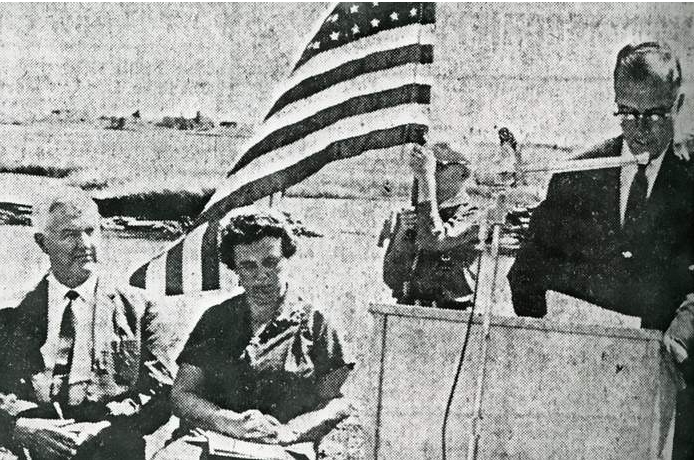
The committee’s efforts were successful. As part of Hampton’s 325th anniversary celebrations in 1963, Governor John King recognized the many people who had made gifts of salt marsh.
In May 1965, Ruth developed an exhibit about conserving the salt marshes for the 32nd Annual Meeting of the NH Federation of Garden Clubs. Later that month she received the National Council of State Garden Club’s Green Ribbon Conservation Certificate for her work to preserve the salt marshes.
Christmas 1966 Ruth received a “kind note” from Hope Wright of Rye, a dedicated Audubon Society enthusiast, with whom she had worked. Ruth included the note in her autobiography.
“To wish you the best and with the hope that Snowy Egrets may grace the Hampton Marshes in the years to come. Also to say Thank You from these golden slippered ones for the great part you have played in preserving their habitat. Also many thanks to you for all your help and encouragement in my conservation efforts. Hope”
Treasured. A word that describe how Ruth felt about the Hampton salt marshes, and how people felt about Ruth’s conservation work.
A park instead of a parking lot
It is because of Ruth Stimson that Hampton Seashore Park is not a parking lot.
In 1960, the town had plans to “hot top” what was known as “the fish house area” along Route 1A at North Beach. The Hampton Garden Club, of which Ruth was a member, vetoed the idea. Then Ruth initiated a petition asking that the area instead be made a park for all to enjoy.
A warrant article for a park, presented at a Town Meeting, passed. It stated that Hampton Seashore Park would be “free public property forever” and “a recreational, non-commercial, non-parking part of the Hampton Park system.”
Ruth again went to work. She developed a plan for the park the Hampton Garden Club hoped to create, which included pictures she drew. She entered her plan in a Sears and Roebuck Foundation Contest two years in a row, and each year was awarded one of five $100 dollar prizes. The Garden Club used the first $100 to landscape the north end of the park and the second $100 to landscape the park’s south end.
The State Federation of Garden Clubs honored Ruth for her work by presenting her with its sterling silver Paul Revere “President’s Bowl” award.
But Ruth wasn’t just the brains behind the operation. She also provided brawn during the two-year beautification project, along with the others in the Garden Club.
Ruth was chairman of the beautification project to turn “the fish house area” into Seashore Park. In her autobiography, she describes some of the work undertaken.
“Mother and I and many others worked hard on cleaning up the area. We planted and watered suitable plants and trees. The Town of Hampton put up a granite fence and chain (along the highway) when petitioned by the (Hampton Garden) Club.
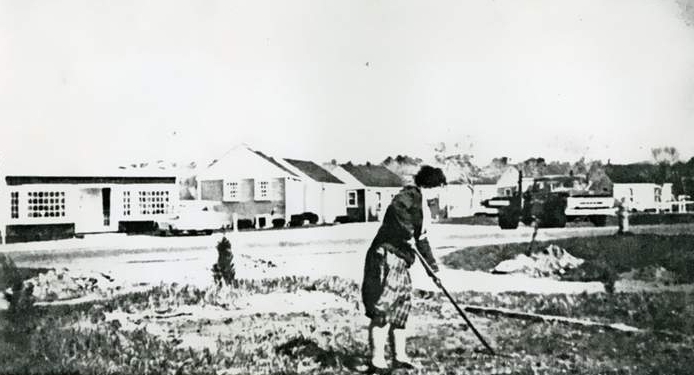
“The Project Chairman really did rake! And there was much debris for removal. Donald Northway loaned his pickup truck and volunteered time. Eugene Leavitt donated loam to make the soil suitable for planting.
It took effort to beautify the 440-foot-long area.”
The Hampton Garden Club provided picnic tables and benches “along with two trash barrels,” a Hampton Union newspaper article noted. “Picnic enthusiasts have already made use of them.”
The Garden Club planted:
• 29 pink and white rugosa rose bushes
• Bayberry bushes
• Beach peas
• Dusty miller
• Seashore goldenrod
• Marsh grass
• Sumac
• 28 red cedar tree
• 3 olive trees
• 7 dozen dwarf marigolds of mixed colors – Ruth planted these, according to a Hampton Union article
There were no water facilities at the Park, so Garden Club members, including Ruth, donated the water needed.
In 1965, the Park was renamed the Ruth G. Stimson Seashore Park in recognition of Ruth’s dedication to it.
In 2001, the Park was rededicated to acknowledge Ruth’s attention to it over the years, with a permanent plaque fastened to a monumental boulder there. At that time, Ruth was busy with a plan to propagate seashore goldenrod at the northeast part of the Park to help keep the area as natural as possible.
Work to save mother earth
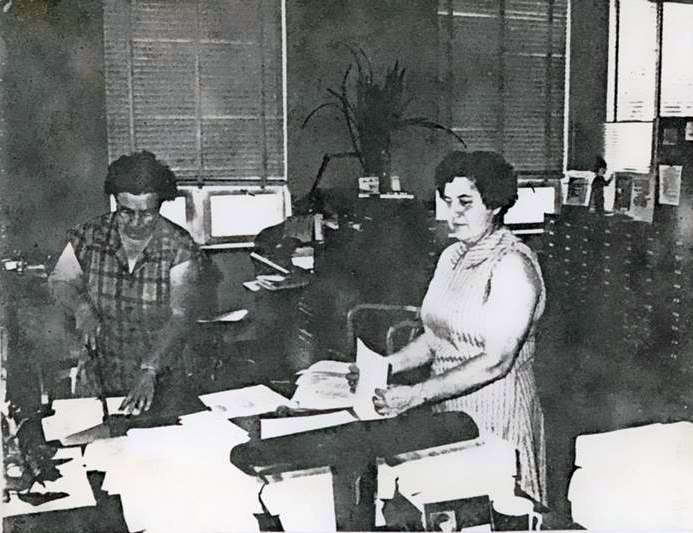
In 1973, the National Association of Extension Home Economists honored Ruth for her pioneering recycling efforts. She was one of eight recipients of the prestigious Florence Hall Award, which recognizes those who implement outstanding responses to emerging issues.
“Since I knew Florence, it was a real pleasure,” Ruth says. A former field agent with the U.S. Department of Agriculture, Florence Hall initiated the award with a $200 grant to be used by the recipient for professional improvement.
Ruth received the award for her Solid Waste Disposal Project, which she had been conducting in Rockingham County. Ruth traveled to Liberty, N.Y. and gave a presentation about her project to 1,500 fellow Extension Home Economists. “It was one of the highlights of my professional career,” she says.
Ruth included her speech, which she noted was limited to three minutes, in her autobiography. Here is how she began, and concluded.
“Solid waste disposal is a real down to earth project. Each of us has to dispose of about 5 pounds daily, or 1,525 pounds a year. Multiply that by the number of people in your town or city. It’s a staggering community problem that must be handled in a sanitary manner. Otherwise air, water and land pollution problems will result…
Solid waste disposal in a sanitary manner is critical in every community, small or large, today and every day in the future. If every one of us adopts the simple truth: ‘I can help save our Earth,’ we can achieve much together: Extension Home Economists working with and encouraging concerned citizens. I hope you’re willing to try.”
Ruth developed a scorecard to help towns rate the effectiveness of their waste disposal. It was part of the information on waste management that Ruth provided to homemaker and other women’s groups, students, ecology-minded organizations and professional associations.
“A point system, based on US Public Health Standards, focused the public’s attention on their local site: its access road, the presence or lack of a supervisor, transportation methods for refuse, compacting methods, and covering the refuse with dirt daily.
“Prohibition of scavenging aroused much discussion as well as the need for a fence, gate, fire protection and an outdoor shelter for employees. Disposition of trees, large appliances, and septic tank effluents were scored along with insect and rodent control. The results indicated the average site was a DUMP: a location where refuse was left uncovered for more than a week. Such a dump is unacceptable by public health standards.”
Ruth’s reach extended far and wide. She taught many classes on waste handling. She conducted an ecology symposium at Pease Air Force Base, and the Air Force flew personnel in from other air bases to take part.
She encouraged people to consider waste disposal alternatives: Sanitary landfill with daily compacting and earth cover; incineration costs with various types of burners; composting, and shredding vegetative matter, and sorting in one’s home and recycling reusable materials.
Ruth mobilized local citizens, public officials and the New England Telephone Co. to collect out-of-date telephone books, which resulted in the recycling of some 18,000.
In a 1973 article the Manchester Union Leader reported, “Recycling of paper and composting have increased, and collection centers for glass, paper and steel containers are now being set up in the county.”
Ruth was “thrilled” when she received a note from Elizabeth Keenan, one of her Girl Scout examiners and a member of the Girl Scout Council, about Ruth’s advocacy for recycling. “Just cannot tell you how proud I am of you!” wrote Elizabeth. “In Girl Scouting I knew you had an interesting future in store...”
Battling mosquitoes in town
Ruth began her crusade against mosquitoes in 1959. Her observation of Hampton’s mosquito problem is recorded in Peter Randall’s history of Hampton: “Ye gods, I never saw so many mosquitoes in my life as there were here.”
And with that observation, Ruth started lobbying for legislation to create mosquito control districts. In 1965, the state law was passed, but Hampton didn’t take action until 1973, when there was an encephalitis outbreak.
That year, Ruth notes in her autobiography, “Many horses died, which aroused horse lovers and the general public to the seriousness of the problem.”
It was Ruth’s cue to renew her fight, using the Extension Service’s motto to learn by doing.
“County citizens needed to learn how to petition to form a mosquito control district under New Hampshire law. The mechanism was there, but lying dormant. I tried out the process step by step as a citizen of Hampton before I publicized the details.”

In 1975 the town approved a mosquito control district, with a $10,000 budget, under the direction of a commission, with Ruth as Chair.
Because mosquitoes travel from town to town, Ruth pushed for a regional approach to mosquito abatement in the many talks she gave throughout Rockingham County. By 1975, ten other towns had also created mosquito control districts.
Always the educator, Ruth applied for and received a $500 Innovative Award from the Extension Service to develop materials about mosquito control.
“I thought there was need of a manual and a quarterly circular to motivate both public officials and interested citizens on how to establish a mosquito control district and how to budget for a breeding site survey for presentation at a budget committee and/or town meeting.
“It (the award) encouraged me to continue pioneering to benefit Rockingham County residents and summer visitors, particularly in the seacoast of NH. Education was the key to action to abate annoying, biting mosquitoes.”
In 1978, Ruth received national recognition for her community action program for mosquito abatement, which served as a model nationwide. She traveled to Washington, D.C. for the award ceremony.
Ruth received the Superior Service Award of the U.S. Department of Agriculture for her part in establishing mosquito control districts throughout Rockingham County. Here is Ruth’s account of the proceedings.
“I drove to Washington, D.C. to the USDA Honor Awards Ceremony. Secretary of Agriculture, Bob Bergland, presented Superior Service Awards to 96 personnel from all over the country. There were 9 from the Extension Service nationally (3 women, of which I was privileged to be one).
“This 32nd Annual Awards Ceremony took place at the Sylvan Theater on Washington Monument grounds on June 1, 1978 at 10:30 a.m. The U.S. Air Force Band played as the colors were presented by the Joint Armed Forces Color Guard. Then the band played while everyone sang the national anthem. There was an invocation and introductions followed by remarks by the Secretary of Agriculture, Bob Bergland.
“Vice President Walter F. Mondale, in a bright blue jacket, gave the main address. The awardees sat on a stage in rows behind the Vice President. I was with a group of men.
“The awards were announced and presented by Secretary Bergland. Each awardee left his or her seat to shake hands and accept a citation from him. Mine read: ‘For developing a community action program resulting in significant improvement of the environment through citizen participation in Rockingham Mosquito Control Project.’
“Dr. Ava Rodgers of the Federal Extension Office and Beatrice Judkins, former NH State Program Leader in Home Economics, graciously hosted Mother. It was a gorgeous June day for an outdoor ceremony, and a major event in my professional career. At 2:30 p.m. Mu Chapter of Epsilon Sigma Phi, the honorary Extension fraternity, hosted a Recognition Program for Extension awardees.
“On our way home Mother and I stayed overnight in a motel. When we left I forgot my blue Dacron, awardee dress in the closet. So I had to phone to have it mailed home. Too much excitement!!!”
The price of fame
As Ruth approached 40 years of service as an Extension Home Economics Agent, she received a National Grange Public Service Award. “Over four decades I had worked closely with Granges in Rockingham County,” she says. Ruth called the award a “first,” since she was a “non-Granger.”
At the end of 1981, newspapers published articles about the Grange award as well as Ruth’s numerous accomplishments over the course of her 40-year career.
In The New Hampshire Alumnus, Curt Mackail writes: “Today, Ruth G. Stimson has lost none of her enthusiasm for continuing education. She reaches people with her workshops and demonstrations on practical home economics topics, which now also include furniture restoration, budgeting, energy conservation and family life, for example, as well as with educational radio broadcasts and newspaper articles. She has conducted innovative teaching programs for the hearing and visually impaired…And, as a senior member of UNH’s Extension Home Economists, Stimson feels that the challenge of her work is as fresh today as it was nearly 40 years ago.”
Ruth received her bachelor’s and master’s degrees from the University of New Hampshire.
Ruth was also 1 of 11 “Women of Accomplishment” featured in a 1981 Seacoast Woman publication.
Fame led to quite a bit of attention.
“When we went grocery shopping, Mother took the shopping cart and her list, and went on ahead as people approached me in the store,” says Ruth. “That way it didn’t take so long as she didn’t like standing and waiting – wasting time. I understood her line of reasoning.”
Retiring, but not slowing down
When Ruth retired, 170 people attended the surprise party, bringing her cards and gifts. The cake, made by Charlene Smith, was something to see. “She decorated it beautifully with the Extension Service seal in colors,” Ruth says.
Ruth wrote a 40th anniversary message reflecting on her career, in which she offers the following thought: “We must periodically re-educate ourselves to our environment or we may be overwhelmed by the frequency of change and the abundance of knowledge. She closes by saying: “Home should be the center of one’s earth, but not its circumference.”
Newspaper articles recounted Ruth’s accomplishments:
• In 1954, Ruth established the Williamson-Babb Scholarship Fund, a tuition grant for a University of New Hampshire or Keene State College senior majoring in Home Economics.
• In 1956, Ruth started “News Hound,” a contest in which extension home economics groups vied to see who could bring more publicity to their groups.
• In 1962, Ruth hosted a number of public television and radio programs.
• Also in 1962, Ruth formed the Rockingham Craftsmen, which, by 1982, had earned more than $100,000 as handicraft marketing cooperative.
• In 1967, Ruth published her book, “Our Heritage at Christmas.”
While Ruth still enjoyed the challenges and satisfaction of her job, she was happy about retiring. A June 1982 article in the Derry News states: “Retirement will offer Ruth Stimson more time to indulge in her other loves: gardening (she has built a solar greenhouse), compiling a pictorial history of New Hampshire – from 1600 to the present – with slides, and traveling.”
On October 14, 14 days after Ruth retired, she was quoted in an article in the Plaistow/Hampstead News – “’I get satisfaction from building fires under people,’ says Ruth Stimson, Rockingham County Home Extension Agent who retired this month following 40 years as an agent.”
The writer, Marlise Swartz, continues: “It isn’t surprising. Just to talk with her made me want to do something – anything. After all, here is a woman, retiring to a well-deserved rest and her plans would make a person half her age weary.”
Marlise Swartz, in her article “She’ll keep building fires,” comments on Ruth’s retirement:
“Retire? In name only, as she intends to study native grasses for this area, get their names and samples…or how about bookbinding? She’s always been curious about that. Of course there is her ever-continuing collection of New Hampshire history, which has taken her all over the area looking in files, records, deeds and recording what she can photographically.
“Miss Stimson is working on a slide presentation of New Hampshire history from 1914, picking up where someone else in the family left off.
“She brings forth a sand-casting project she is learning to master because someone asked her to teach the process. ‘I guess I’m a missionary,’ says Miss Stimson, explaining her desire to learn and then share information and skills.”
Throughout her autobiography, in many different ways, Ruth says that she never tires of learning or of people who want to learn.
In 1982, in the three months following her retirement, Ruth gave five talks. In 1983 she gave 20 talks. She joined Epsilon Sigma Phi, the national Extension fraternity, and the Active Retirement Association at UNH.
“They (the Active Retirement Association) ran a contest to develop a logo. So I sent in an idea, which took a bit of thinking in between housework, food shopping, errands, reading, gardening and TV.” She learned that she was one of three winners. The graphic designer had selected elements from three entries to create the logo. Ruth won for her circles of continuity.
Says Ruth about her retirement, “I could see life wasn’t going to be dull.”
Ruth serves as Library Trustee
In 1989, Ruth was a candidate for Lane Memorial Library Trustee. The local newspaper ran an article with her qualifications, which was a good thing.
“I had no intention of standing outdoors in the winter with a sign on voting day,” says Ruth. “It was simpler to let citizens know my qualifications before they voted on March 14.
“There were three candidates, who competed for the office: the male incumbent, another man, and myself. When the Town Clerk reported the votes they were: 516, 256, and 710 respectively. The Town Clerk, Jane Kelley, administered the oath to uphold the State Constitution before I appeared at the first meeting of the Trustees.”
Ruth served as a Library Trustee for 6 years. She was secretary for two of these years and chairman for 3 years.
“March 9, 1995 was my final meeting as Library Trustee Chairman,” says Ruth. “At the start Katie Anderson presented a verbal tribute, which was much appreciated, along with a silk flower arrangement. Cathy Redden (Library Director) presented a quilted pillow-comforter she had made, and a note – ‘You have served the Lane Memorial Library with distinction. Thank you for sharing your expertise, energy, time, effort and concern. You have left large shoes to fill.’
“The Library Trustees (later) notified me that the American Horticultural Society Encyclopedia of Garden Plants was purchased in my honor. I accepted the invitation to examine it before it was circulated. It had 4000 beautiful colored pictures of trees, shrubs, ferns, grasses, bulbs, cacti, perennials and water plants. There was a tremendous amount of information on 608 pages. I thought it was an excellent addition to Lane Memorial Library’s collection.”
And apropos since Ruth was a member of the Hampton Garden Club and an avid gardener.
A life well lived
Ruth was 84 years old when she died in July 2004. Tuck Museum Director Betty Moore remembers saying goodbye.
“Ruth was one-of-a-kind – logical, practical and Yankee frugal. Her motto was ‘Use it up, wear it out, make it do or do without.’ Ruth was a long-time friend and mentor, and I was devastated when I learned Ruth had passed away. I wanted to pay my respects by attending her memorial service in Amherst, NH, where the rest of her family was buried. Like Ruth, her service was no frills – just utilitarian and simple.
“The day was perfect! A gentle breeze was blowing the grasses and the meadow flowers. I remember the warmth of the sun on my face and listening to the birds singing in the distance. There was this sense of peace and tranquility. This is as Ruth would have ordered, I thought to myself.
“Eight of us were in attendance. Some of us were sitting and a few were standing in a line on one side of the casket, with the minister on the other side facing us. As the minister began speaking, a small white butterfly appeared – the kind you might not normally notice. Ignoring the wildflowers that were in abundance and the flowers on the casket, it flew from person to person, stopping and fluttering around each of us in a prolonged and deliberate effort.
“Mesmerized, I watched as the butterfly made its way from one to the next, then glided to the casket, hovering over the top and twice going underneath as if checking it out. The butterfly flew to the minister, then back to us, once again moving along the line.
“I did not hear a thing the minister said – his words became the background, as I was wrapped in the cocoon of this perfect day watching this small butterfly attend Ruth’s service with us.
“With the minister’s closing words, the little butterfly soared out of sight.
“Goodbye, Ruth, I thought.”
Ruth Geneve Stimson was born November 17, 1919 and died July 14, 2004.

